# Lists
Workato enables you to read, process, and write lists across applications. You can work with list items individually or in batches.
This guide explains how to manage lists in Workato recipes. It covers how list data appears in your recipe's datatree, different ways to map and process list datapills, and tips for common use cases.
# List datapills
List datapills appear in the datatree with a lines icon:
![]() List icon in the datatree
List icon in the datatree
# Map list datapills using formula mode
Some input fields, such as those that expect a string or number, may not allow you to select list datapills in text mode. In these cases, switch the field to formula mode to map list datapills.
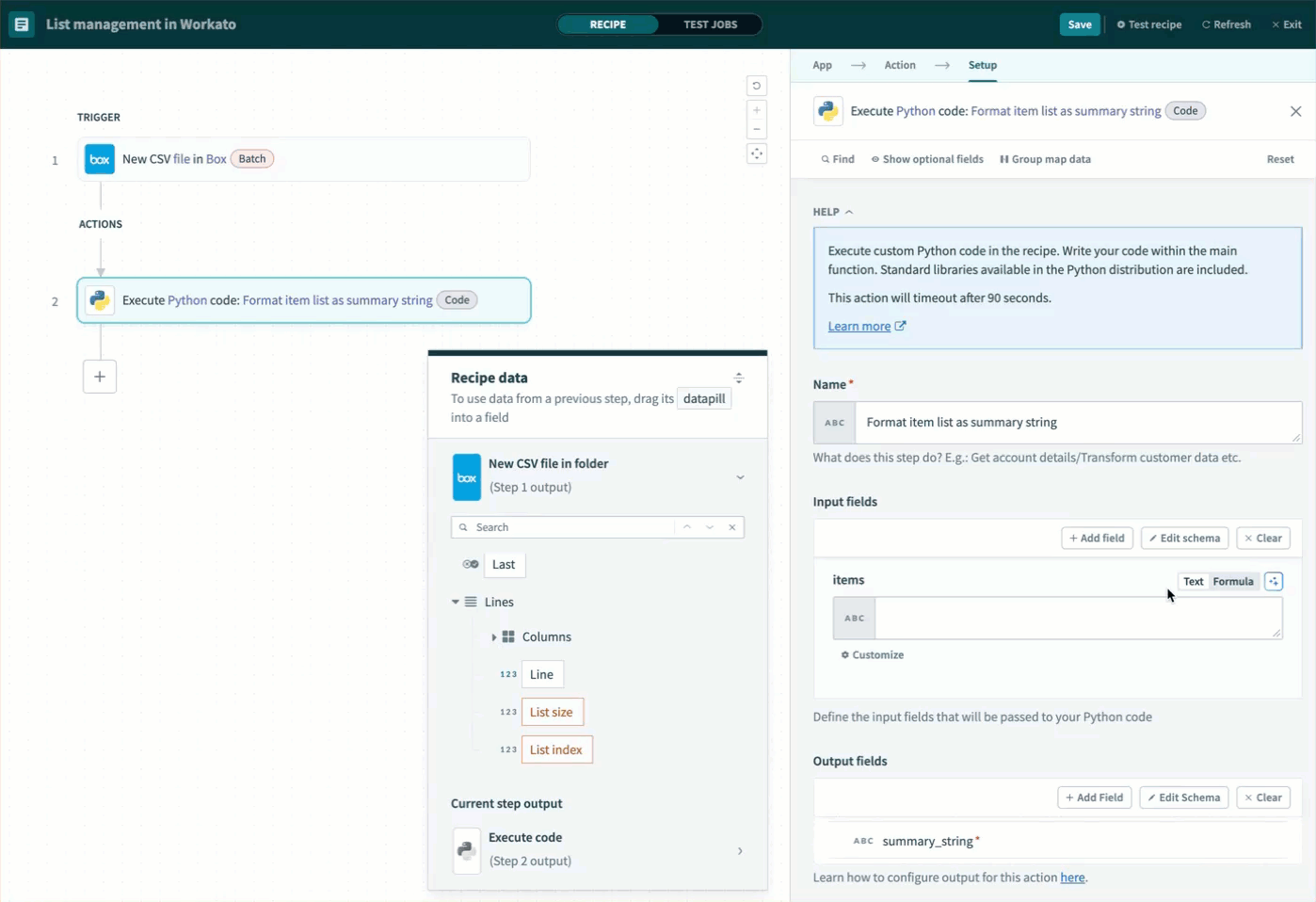 Mapping list datapills in formula mode
Mapping list datapills in formula mode
# How to use list datapills
You can map list datapills into actions using the following methods:
- Direct use without list processing
- Actions that accept list inputs
- Using the repeat step for explicit list processing
USING A SAMPLE CSV
This section uses a sample CSV file with gardening supply inventory to demonstrate list behaviors in recipes. The file is read using a New CSV file in folder trigger and parsed into a list of three lines.
View sample CSV
Manufacturer,Model,Category,Item Name,Item Code,Description,Unit Cost,Unit Price,Taxable,Tax,Material,Color,Dimensions
Sierra Gardening,MS-321,Gardening supplies,Pine wood potting bench,MS-321,Pine wood potting bench with durable construction and a stylish finish.,74.5,119.99,Yes,0.0875,Pine,White,30 inches
Sierra Gardening,MS-322,Gardening supplies,Cherry wood potting bench,MS-322,Cherry wood potting bench with durable construction and a stylish finish.,74.5,119.99,Yes,0.0875,Cherry,Natural,30 inches
Sierra Gardening,MS-323,Gardening supplies,Cedar wood potting bench,MS-323,Cedar wood potting bench with durable construction and a stylish finish.,74.5,119.99,Yes,0.0875,Cedar,Black,30 inches
You can upload this file to your Box folder to try out the examples in this guide.
# Direct use without list processing
Mapping datapills directly from a list uses only the first item.
For example, when you map a list datapill directly into the Log message action without list processing, the action retrieves only the first line from the CSV file.
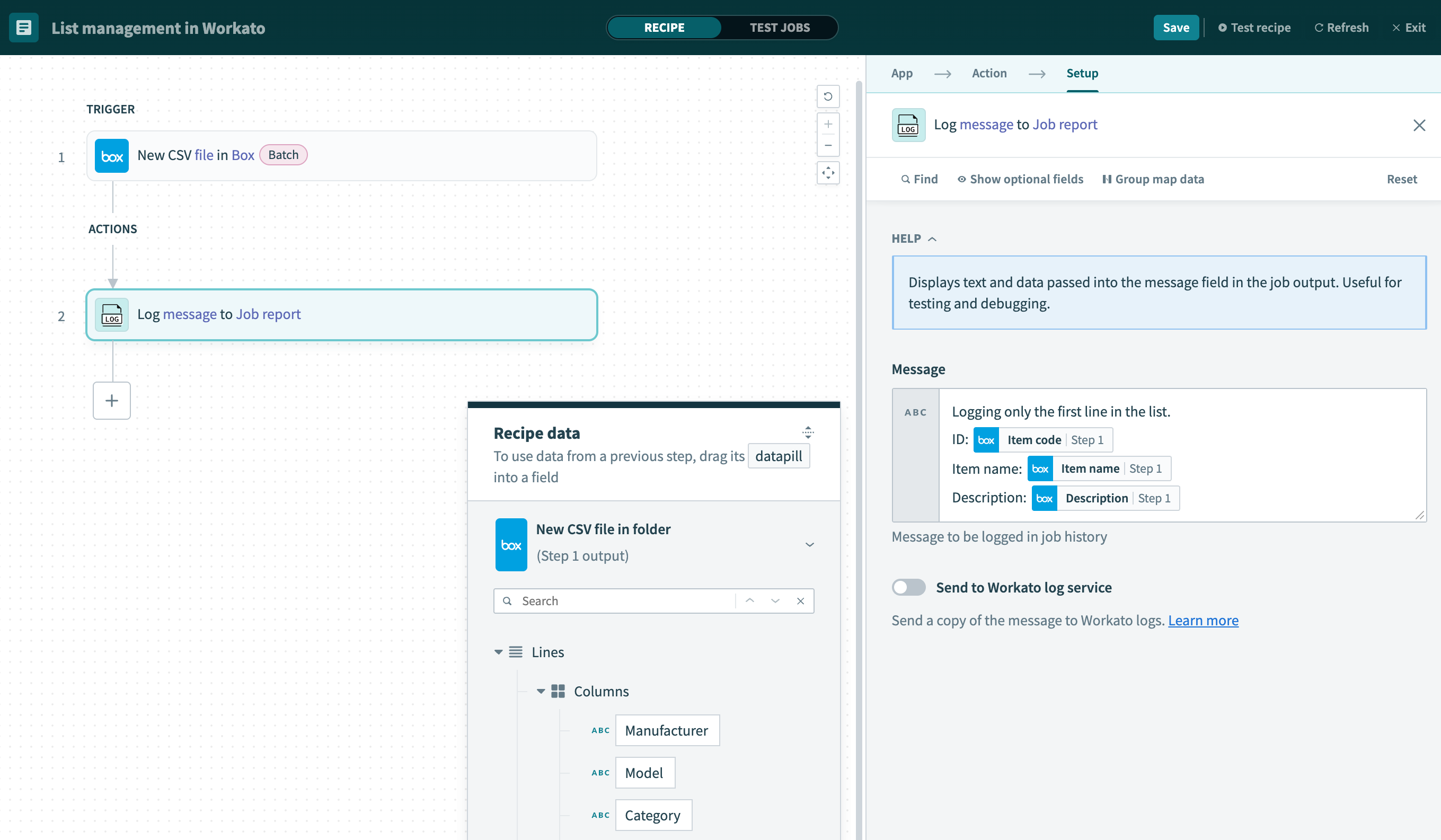 Recipe using list datapills directly in a Log message action. Example recipe (opens new window)
Recipe using list datapills directly in a Log message action. Example recipe (opens new window)
In the job details page, the trigger output displays all three lines within the CSV file.
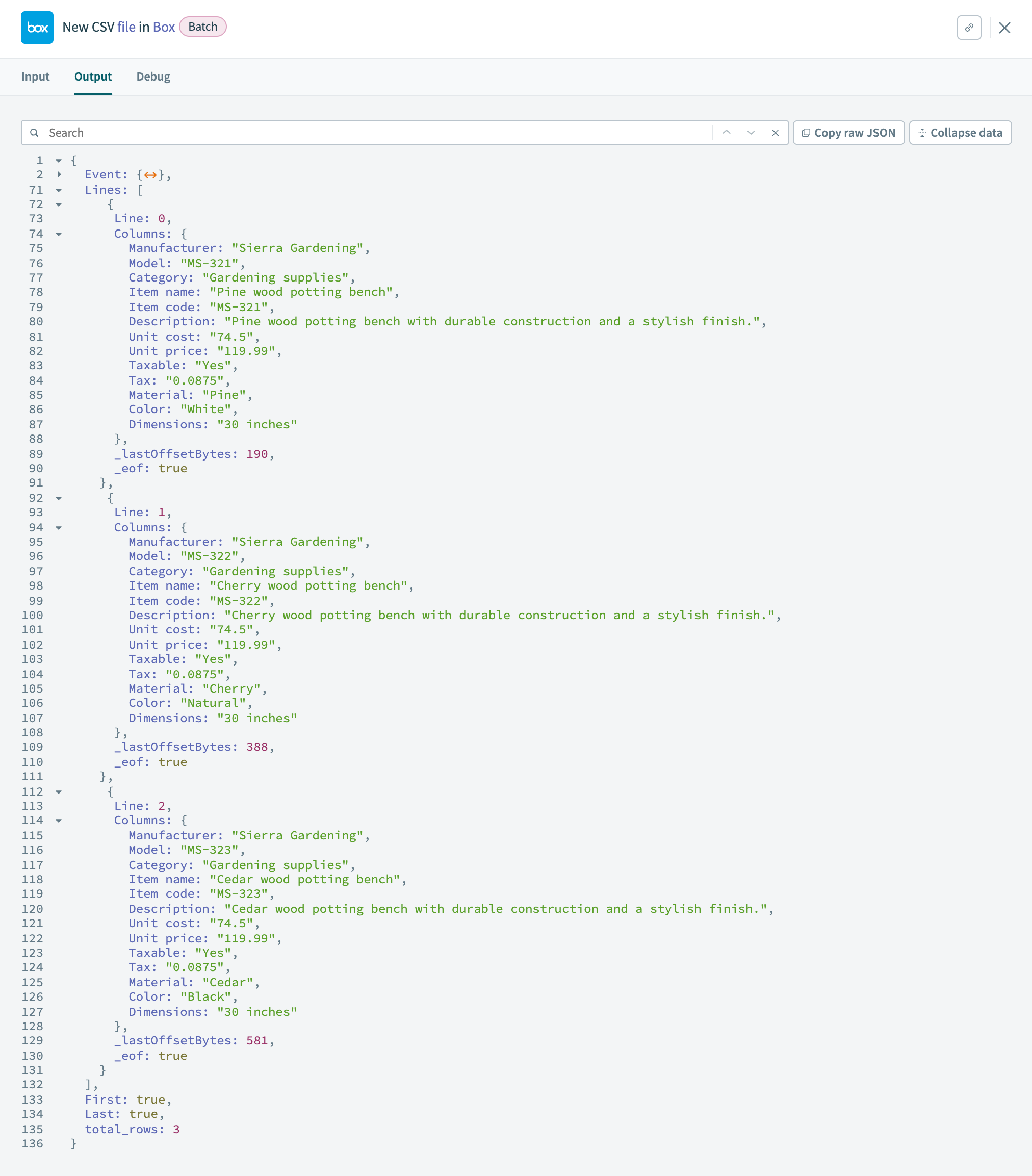 Trigger output details displaying lines within the CSV file
Trigger output details displaying lines within the CSV file
However, the Log message output only displays the first line:
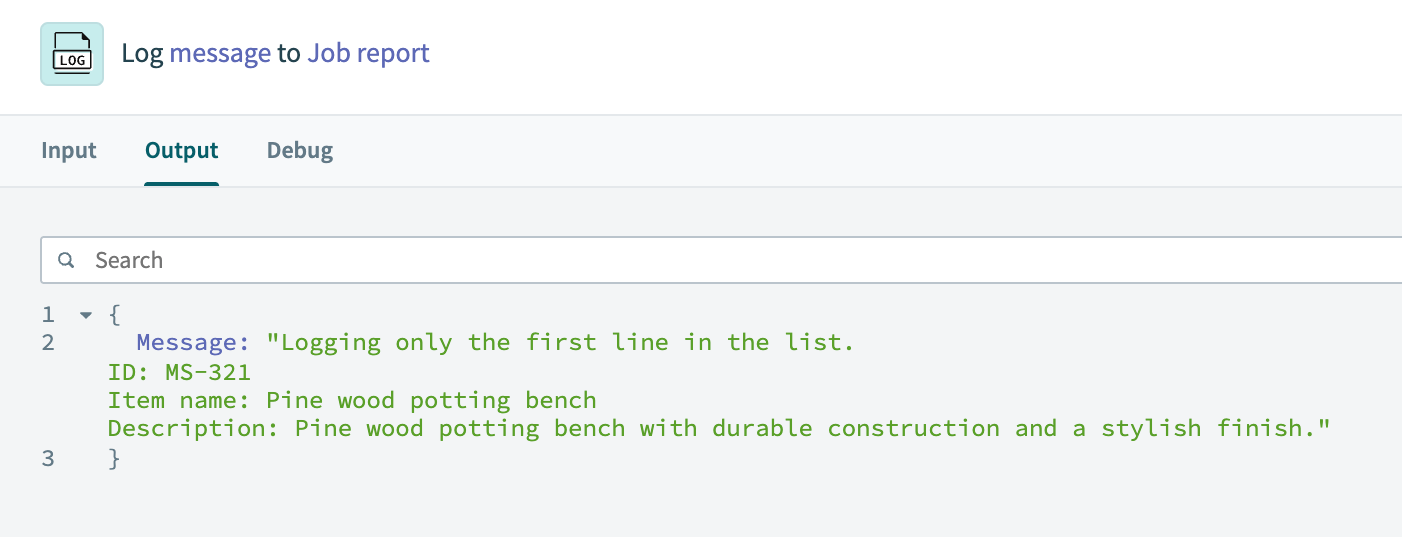 Log message input displaying only the first line of data
Log message input displaying only the first line of data
# Actions that accept list inputs
Some actions accept lists as input, including Salesforce bulk insert and update, journal entry creation in accounting apps, and sales order creation in ERP apps.
The following example imports new products from a Box CSV file into Salesforce using the Bulk insert action:
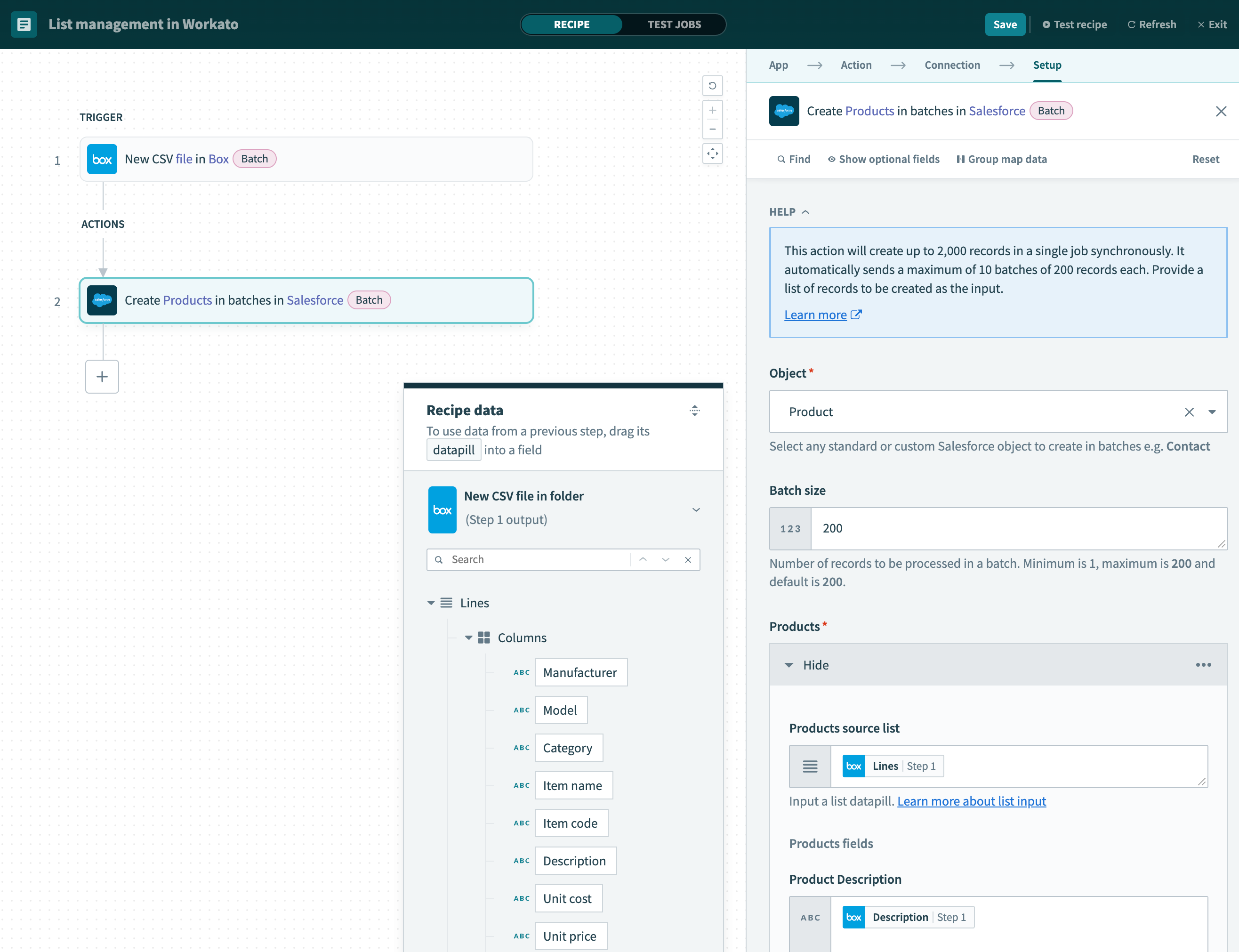 Example recipe using list input. Example recipe (opens new window)
Example recipe using list input. Example recipe (opens new window)
These actions include a Source list field that accepts only list datapills. When this input is selected, you can only select list datapills from the datatree. Map a list datapill, such as Rows , to this field.
The action processes the entire list. In this example, the three inventory items from the Box CSV file are created as Salesforce products.
The job output confirms the three products were created:
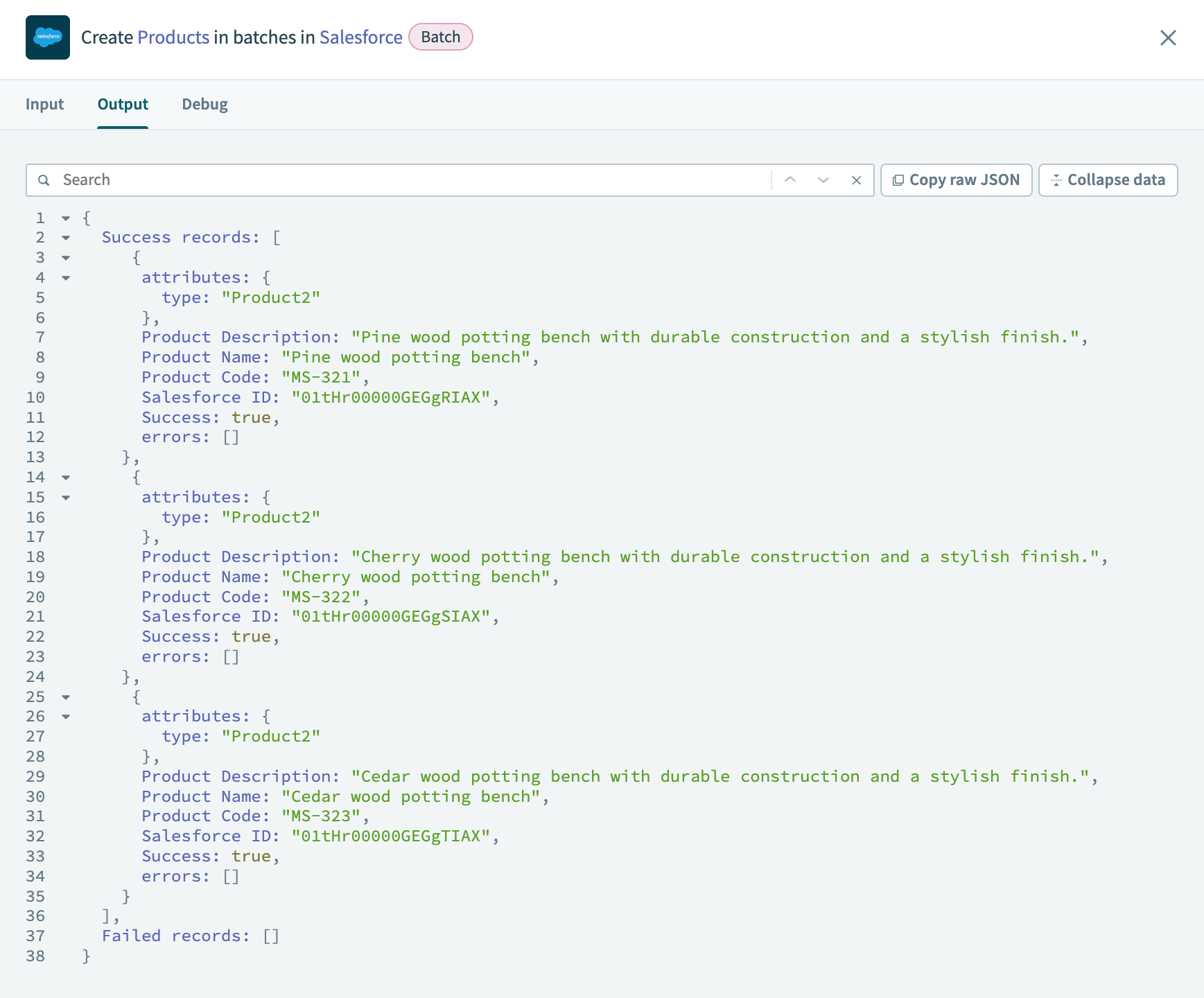 Salesforce bulk insert via list input
Salesforce bulk insert via list input
# Using the repeat step for explicit list processing
If an action doesn't support list input, you can use a Repeat step to run the action for each item in the list.
Recipe using repeat step to iterate through NetSuite list of inventory items. Example recipe (opens new window)
To iterate through the Rows list, pass the Rows list datapill as input for the repeat step. The recipe runs the Add inventory item action three times, once for each CSV line.
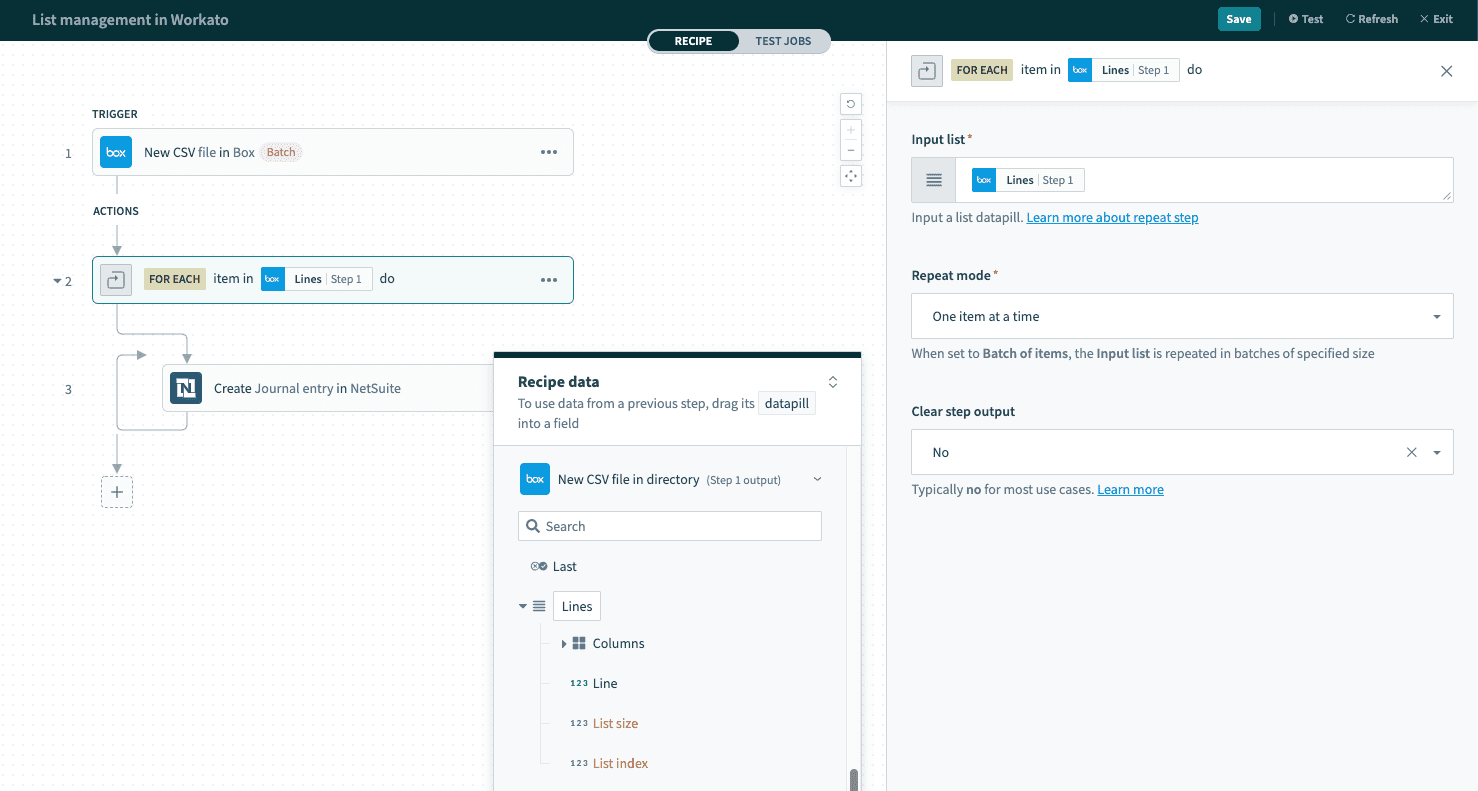 Provide the list datapill as input for repeat step
Provide the list datapill as input for repeat step
When using the Repeat step, the important thing to note is to retrieve datapills from the For each datatree.
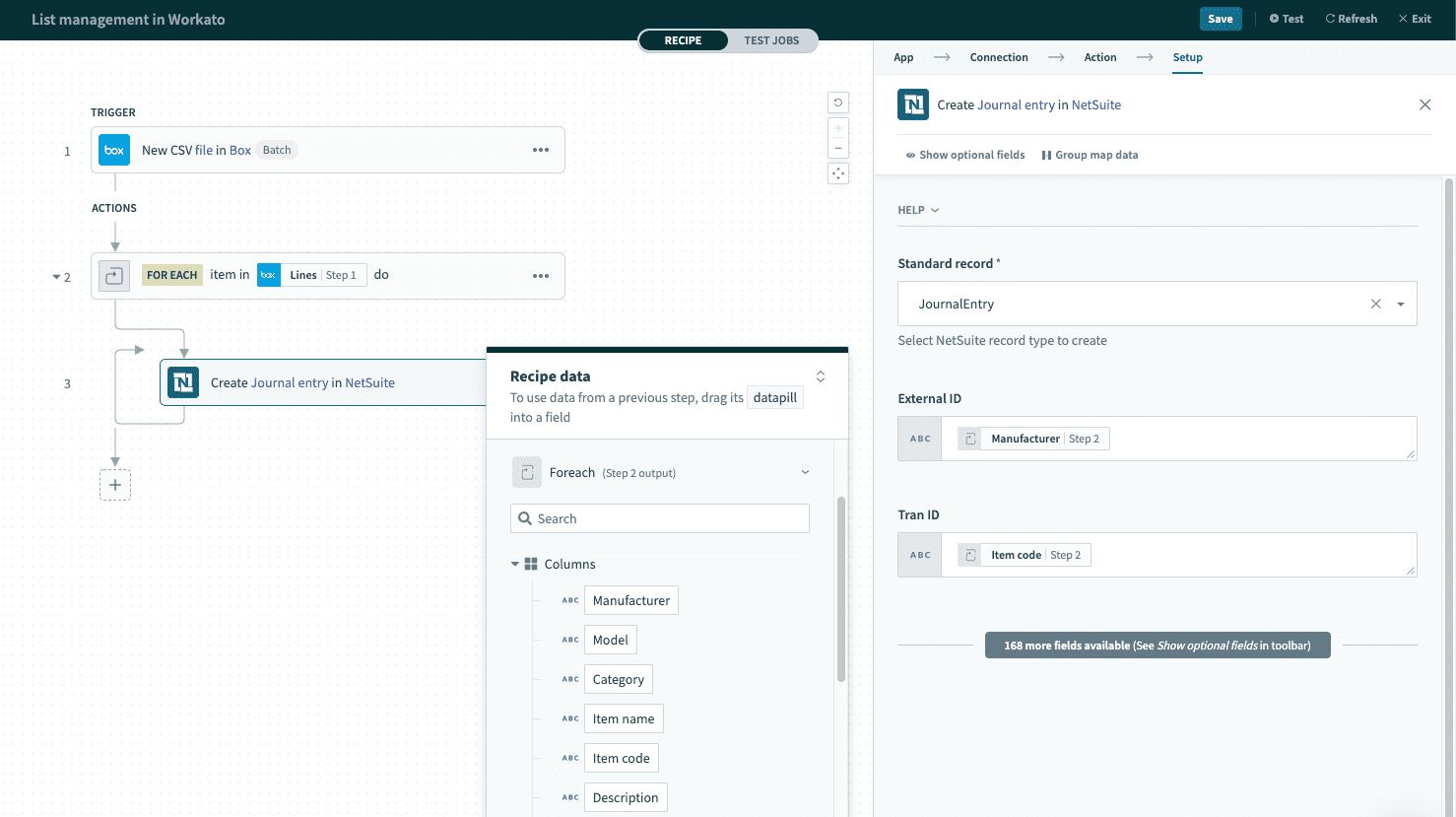 Mapping datapills from the Foreach datatree
Mapping datapills from the Foreach datatree
This ensures each Add inventory item step uses the next line in the CSV.
# Common mistake when using the repeat step
Mapping datapills directly from the list datapill instead of from the Repeat step causes every iteration to use the first item's data. This results in duplicate records.
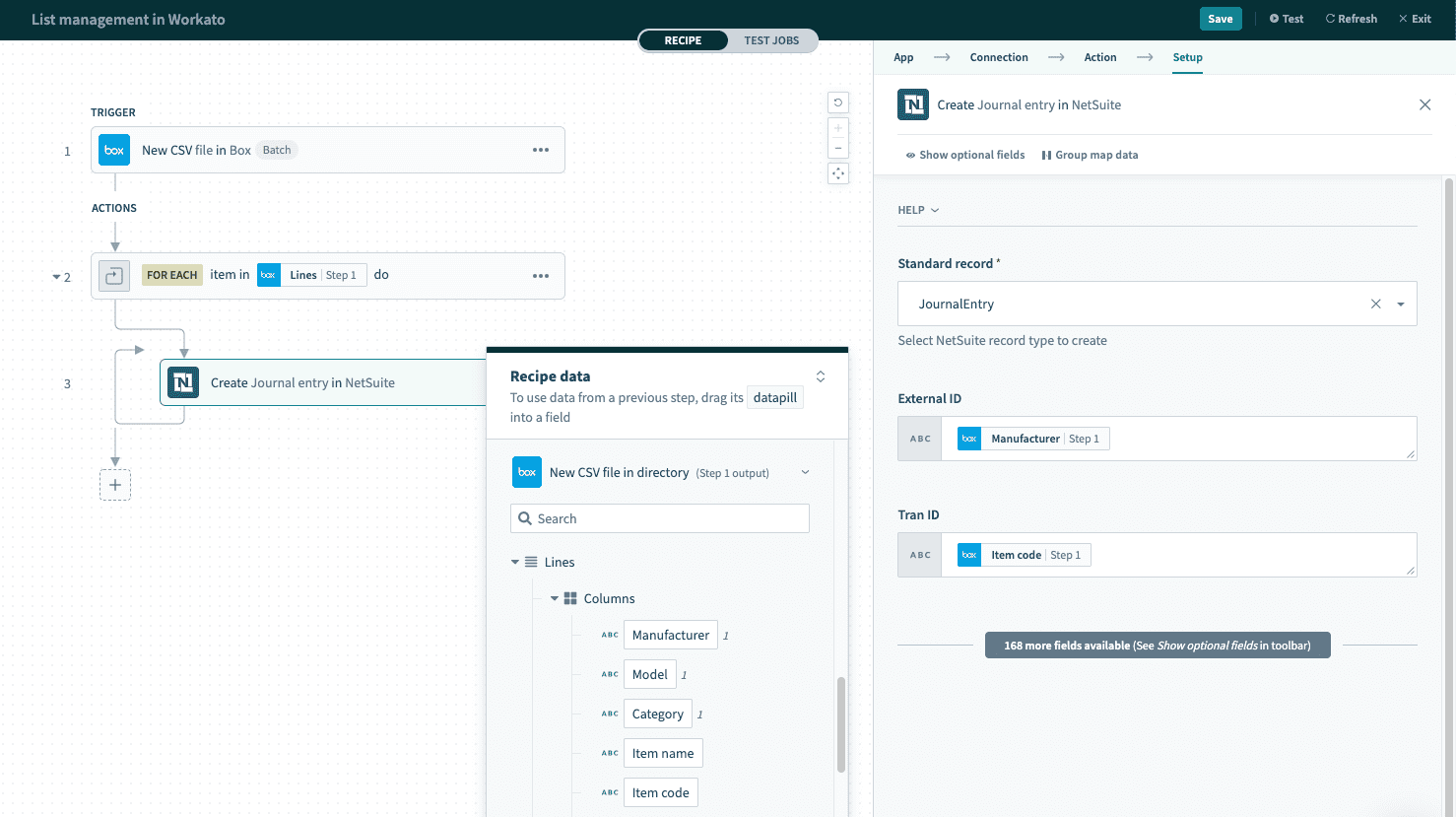 Example of a recipe with INCORRECT (direct) mapping from list instead of from the Repeat step. Example recipe (opens new window)
Example of a recipe with INCORRECT (direct) mapping from list instead of from the Repeat step. Example recipe (opens new window)
# Manage lists with Variables by Workato
The Variables by Workato supports advanced list management using variables with custom schemas. You can create a list, define its structure, and dynamically add or clear items in recipes.
Supported list actions include:
LISTS BY WORKATO DEPRECATION NOTICE
Workato has deprecated the Lists by Workato connector. Although we continue to provide runtime support for active recipes using this connector, creating new recipes with it is no longer possible. Additionally, we will no longer fix bugs or enhance this connector in the future.
We recommend that you transition to the Variables by Workato connector, which offers enhanced list management with support for custom schemas and more dynamic control over list items. For fixed count loops, use Repeat while loops with the Index datapill to control loop execution.
You can still access the Lists by Workato documentation here for reference.
# Clear step output
You can configure the Clear step output field when using the Repeat action to repeat a step in your recipe.
 Clear step output field
Clear step output field
The Clear step output field is set to No by default. If you don't clear the step output when the condition is satisfied on the first iteration, the variable retains the value from the first iteration even if later iterations don't satisfy the condition. We recommend you change the Clear step output field value to Yes if you plan to:
Use datapills from previous steps inside the loop that is nested in the condition.
Use the result from the most recent iteration, which may differ from the result of your first iteration.
Consider the following example to determine how to set the Clear step output field in your recipe:
- Create a list of orders.
- For each order in the list:
- If the order amount exceeds $1000:
- Calculate the discount for the order.
- If you apply a discount:
- Update the variable
total_discountwith the discount amount.
- Update the variable
- If the order amount exceeds $1000:
If you keep the default No setting for Clear step output, and if the condition is satisfied in the first iteration, the total_discount variable retains the value from the first iteration.
First iteration:
- Order amount is $1500.
- Workato calculates a discount of $150.
total_discountupdates to $150.
- Workato calculates a discount of $150.
Second iteration:
- Order amount is $1200.
- Workato calculates a discount of $120.
total_discountincorrectly remains at $150.
- Workato calculates a discount of $120.
In this scenario, the total_discount is inaccurate on the second iteration, retaining the value $150 from the first iteration instead of applying the new discount amount of $120.
However, if you set Clear step output to Yes:
First iteration:
- Order amount is $1500.
- Workato calculates a discount of $150.
total_discountupdates to $150.
- Workato calculates a discount of $150.
Second iteration:
- Order amount is $1200.
- Workato calculates a discount of $120.
total_discountupdates to $120.
- Workato calculates a discount of $120.
Last updated: 7/15/2025, 6:49:09 PM